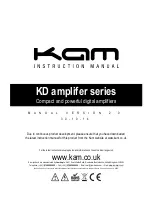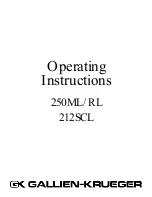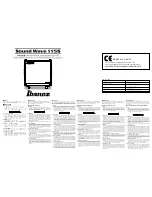
12
VIBE MonoBox III Class AB Analogue Amplifier
FINAL SYSTEM CHECKS
1.
Start the engine and turn on the source unit. After a two -second delay, slowly increase the Volume
Control and listen to the audio. If you hear any noise, static, distortion or no sound at all, check the
connections, and also refer to Troubleshooting. Depending on your system design, the levels may
become quite loud even at low Volume Control settings. Until you get an "audio feel" of the system's
power, use care when adjusting controls.
2.
Increase the volume and verify that the amplifier reproduces audio without distortion. If you hear
distortion, check the connections and verify that the Gain Control is set correctly. Another possibility is
damaged speakers or under-powered speakers. Once again refer to Troubleshooting for additional
help.
3.
A distorting subwoofer is not as easily heard, listen for pops and visually check that the cone is not
moving at full excursion. If the amplifier at any enters into protection mode, turn the head unit off
and the main ignition and check the installation and operation of the unit.
5
VIBE MonoBox III Class AB Analogue Amplifier
Standard Controls
§
Remote Level Input
This input socket is for the connection of the external digital level controller .
§
Gain Control
This allows you to set the nominal operating level of the amplifier. The amplifier has an input range of 250mV
to 6V for the RCA inputs.
§
Low Pass Filter
This allows you to set the frequency at which the amplifier output will be filtered above this point. The filter
has a range of 30 – 250Hz with a 24dB slope per octave.
§
Subsonic Filter
This allows you to set a frequency at which the amplifier output will be filtered out below this point. The
filter has a range of 10 – 80Hz with a 24dB slope per octave.
§
Bass Enhance Plus
This feature offers up to 15dB of bass boost at any frequency between 30 – 125Hz with a fixed Q value of 2.
Variable frequency and level offers the ability to boost and shape the frequency response of the subwoofer
output.

































